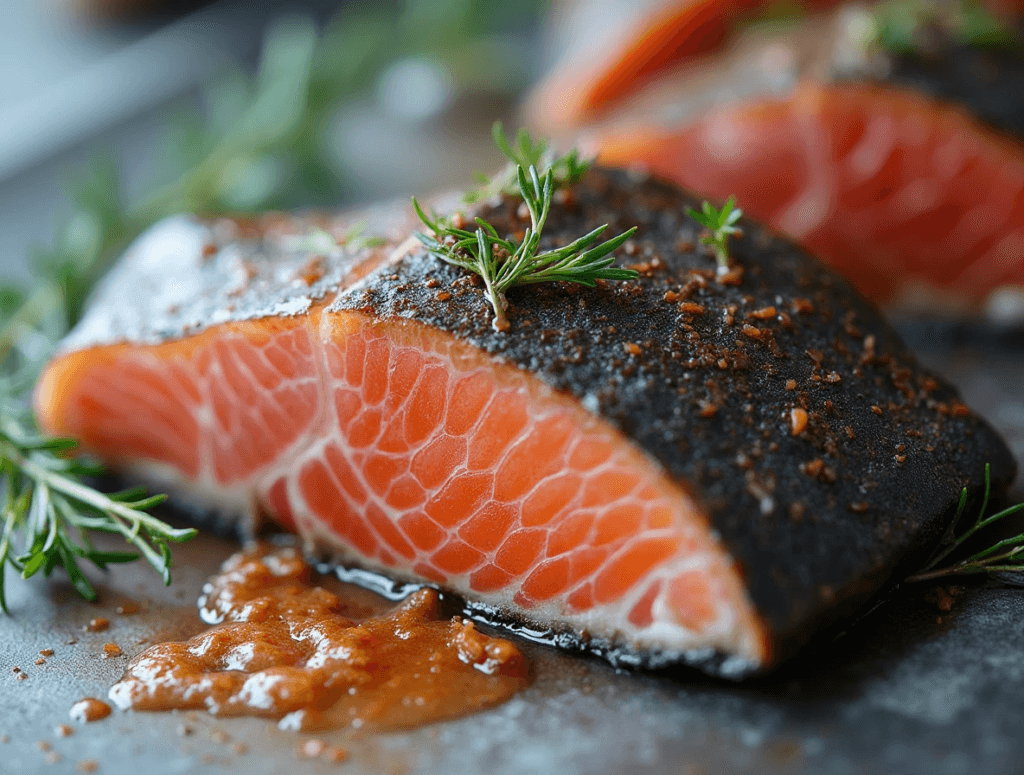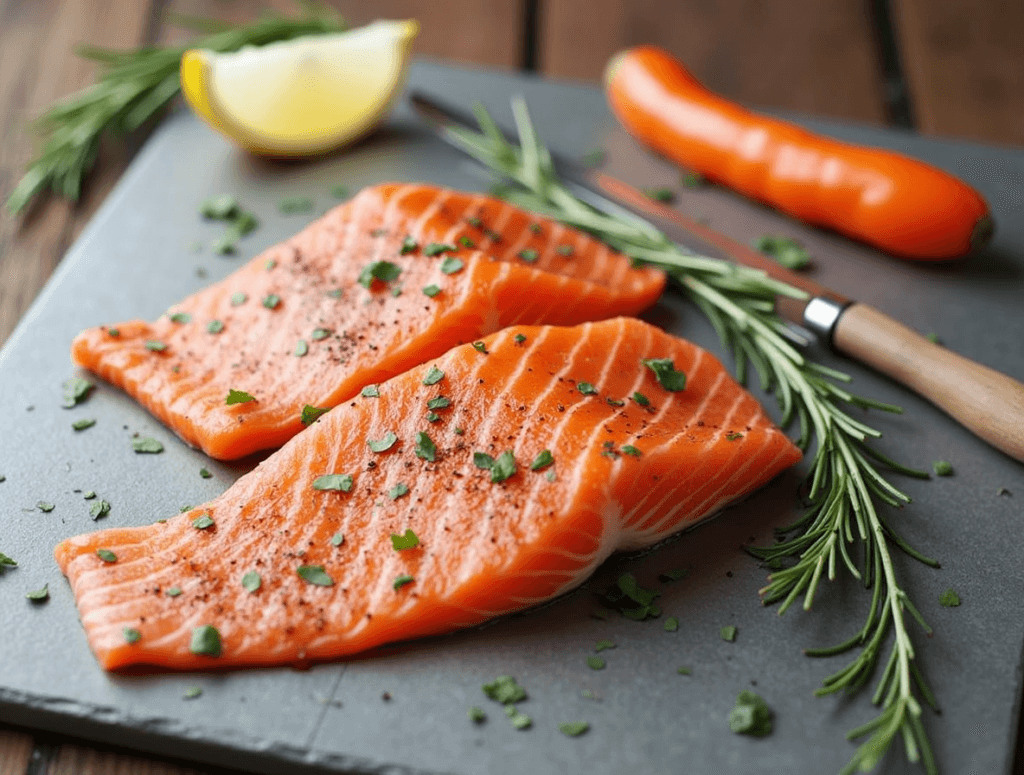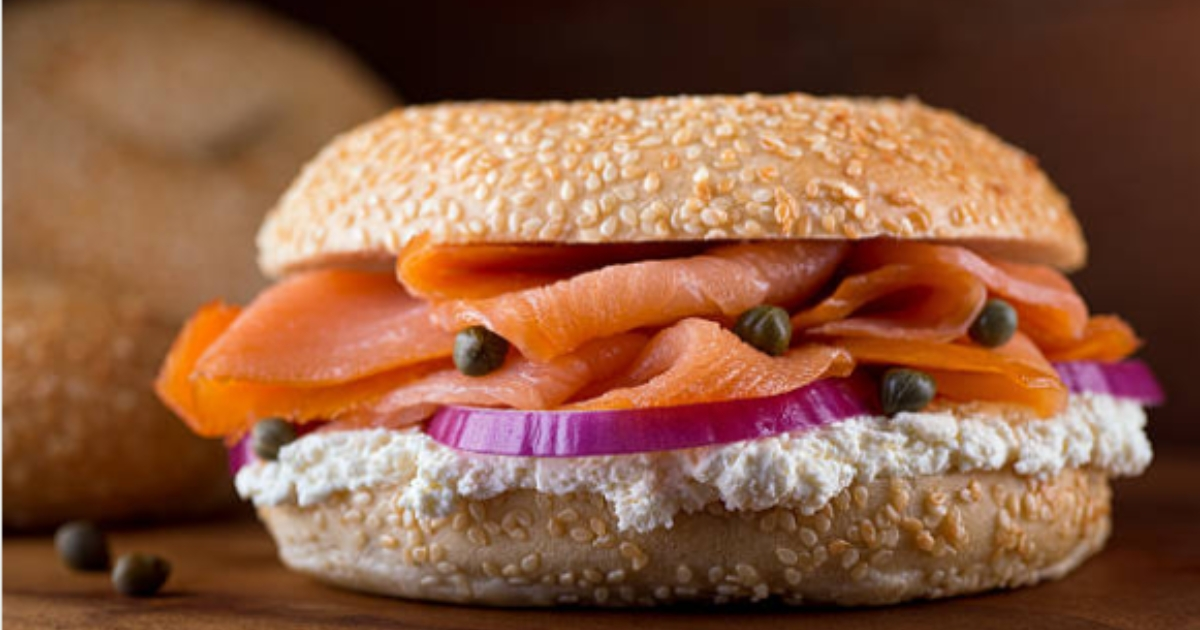Table of Contents
Smoked Salmon Temperature is a beloved delicacy, known for its delicate flavor, tender texture, and smoky aroma. Whether you’re a seasoned cook or new to smoking fish, one crucial element stands between you and the perfect smoked salmon: temperature. Achieving the right smoked salmon temperature is the key to a successful smoking session, ensuring that your salmon is neither undercooked nor overcooked but perfectly tender and full of flavor.
In this guide, we’ll walk you through everything you need to know about the ideal smoked salmon temperature, from the best practices for cooking it to the tools you’ll need for precision. By the end of this article, you’ll be equipped to smoke salmon like a pro, getting the best results every time.
Introduction to Smoked Salmon Temperature
If you’re looking to master the art of smoking salmon, understanding temperature is essential. Smoking salmon isn’t just about adding flavor; it’s about getting the texture and taste just right. Too hot, and your salmon will dry out. Too cold, and it won’t absorb the smoke properly, leaving it undercooked. Getting the smoked salmon temperature right can elevate your dish from good to great.
In this article, we’ll cover everything you need to know about smoking salmon at the ideal temperatures. Whether you’re smoking salmon at home for a special occasion or simply perfecting your grilling skills, the correct temperature will ensure the perfect outcome every time.
Why Temperature Matters for Smoked Salmon
Temperature plays a pivotal role in the outcome of your smoked Salmon Temperature. There are several reasons why getting the right temperature is essential:
- Flavor Development: Smoking salmon at the correct temperature allows it to absorb the smoke and seasoning, developing a deep, rich flavor. If the temperature is too high or too low, the salmon won’t fully take on the smoke, affecting its flavor.
- Texture: Temperature controls how the proteins in the salmon break down. Smoking it at the right temperature ensures a moist, tender texture. Overcooking it can lead to dry, tough salmon, while undercooking it will result in a slimy, raw texture.
- Food Safety: Properly smoked salmon also ensures that it reaches a safe internal temperature, killing harmful bacteria. Undercooked salmon can be a health risk, which is why monitoring temperature is so crucial.
- Consistency: When you smoke your salmon at the right temperature, you ensure consistent results every time. You won’t have to worry about the unpredictability of overcooked or undercooked fish, and you can replicate your best smoked salmon recipe repeatedly.

Ideal Smoked Salmon Temperature: Low and Slow
One of the first things you need to understand about smoking salmon is the concept of “low and slow” cooking. This means that you cook the salmon at a low temperature for a longer period of time. While it may take a little longer, the results are worth the wait.
Understanding Low and Slow Smoking (H3)
When smoking salmon, your goal is to cook the fish slowly at a low temperature, allowing it to absorb the smoky flavors while retaining its moisture.
- Temperature range for smoking: The ideal temperature for smoking salmon is between 180°F and 225°F (82°C – 107°C). This range is low enough to prevent the salmon from drying out but high enough to cook it thoroughly and allow it to absorb the smoke.
- Why it’s beneficial: Cooking salmon at low temperatures ensures that the fish remains moist and tender. The slow process allows the salmon to take on the flavor from the wood chips or pellets in the smoker without becoming overcooked or tough.
The Best Smoked Salmon Cooking Temperatures for Different Styles
There are two main methods of smoking salmon: hot smoking and cold smoking. Each method requires a different temperature range to achieve the perfect result. Let’s break them down.
Hot Smoked Salmon Temperature
Hot smoking is the most common method used to smoke salmon. This technique cooks the fish thoroughly, resulting in a flaky texture and a bold, smoky flavor.
- Ideal temperature range: The smoker should be set to a temperature between 180°F and 225°F (82°C – 107°C). This is the sweet spot for hot smoking salmon.
- Internal temperature of salmon: The internal temperature of the salmon should reach 140°F to 145°F (60°C – 63°C) for hot-smoked salmon. This ensures that the fish is fully cooked and safe to eat while maintaining its delicate texture.
- Cooking time: Depending on the thickness of your salmon fillet, smoking will take anywhere from 1.5 to 3 hours.
Pro tip: Use a meat thermometer to check the internal temperature of your salmon for accurate results.
Cold Smoked Salmon Temperature
Cold smoking salmon is a different approach that involves smoking the fish without cooking it fully. This method gives the salmon a silky, smooth texture and a more subtle smoky flavor. It’s commonly used for making lox or smoked salmon for sushi.
- Ideal temperature range: The smoker should be kept between 70°F and 90°F (21°C – 32°C). Cold smoking is done at a much lower temperature than hot smoking, which is why it takes longer.
- Time required: Cold smoking takes 12 to 24 hours, depending on the thickness of the salmon and the intensity of the smoke flavor you want to achieve.
- Internal temperature: Cold smoked salmon doesn’t reach the same internal temperature as hot smoked salmon. Instead, you’re looking for a firm texture that isn’t raw but still retains its delicate, almost silky consistency.
Pro tip: If you’re cold smoking salmon at home, make sure your smoker has proper ventilation and airflow to maintain the low temperatures required.
How to Measure Smoked Salmon Temperature Accurately
When it comes to smoking salmon, precision is key. Whether you’re hot smoking or cold smoking, measuring the temperature accurately is essential to ensure the best results.
Using a Meat Thermometer
A digital meat thermometer is your best tool for measuring the internal temperature of the fish. Here’s how to do it:
- Insert the thermometer: Insert the thermometer probe into the thickest part of the salmon fillet.
- Wait for the reading: Let the thermometer sit for a few seconds to get an accurate reading.
- Check the temperature: For hot smoked salmon, ensure the internal temperature reaches 140°F to 145°F (60°C – 63°C). For cold smoking, the texture should be firm to the touch, but no thermometer is needed.
Using a Smoker Temperature Gauge
You also need to monitor the temperature of the smoker. If your smoker has a built-in temperature gauge, make sure it’s calibrated and functioning correctly. For both hot and cold smoking, maintaining the right smoker temperature is key to success.
Smoked Salmon Recipe: How to Achieve the Perfect Temperature
Now that you understand the importance of temperature, let’s dive into a simple smoked salmon recipe to put your knowledge into action. Here’s a basic recipe for hot smoked salmon that you can easily follow.
Ingredients Table:
| Ingredient | Quantity |
| Fresh salmon fillets | 2 lbs |
| Brown sugar | 1/4 cup |
| Salt | 2 tablespoons |
| Lemon zest | 1 teaspoon |
| Fresh dill | 1 tablespoon |
| Black pepper | 1 teaspoon |
Steps:
- Prepare the Salmon:
- Mix the salt, brown sugar, lemon zest, and black pepper. Rub this mixture onto your salmon fillets and refrigerate for at least 1 hour to allow the brine to set in.
- Set Up the Smoker:
- Preheat your smoker to 200°F (93°C). Use a mild wood like applewood or alder for a light, sweet smoke.
- Smoke the Salmon:
- Place the salmon on the smoker racks and smoke for 1.5 to 3 hours, or until the internal temperature reaches 140°F to 145°F (60°C – 63°C).
- Check the Internal Temperature:
- Use a meat thermometer to make sure the internal temperature has reached the correct level.
- Serve and Enjoy:
- Once the salmon is smoked to perfection, remove it from the smoker, and let it rest for a few minutes before serving.

Common Mistakes to Avoid When Smoking Salmon
While smoking salmon is a relatively simple process, there are a few common mistakes that can ruin the end result. Here’s what you should avoid:
- Inconsistent temperature: Fluctuating smoker temperatures can lead to uneven smoking. Make sure your smoker stays within the ideal temperature range.
- Overcooking: Overcooked salmon becomes dry and tough. Always use a meat thermometer to ensure that you reach the right internal temperature without exceeding it.
- Under-smoking: If your salmon hasn’t been smoked long enough, it may lack the deep, smoky flavor you’re after. Make sure you give it enough time in the smoker to absorb the smoke.
Frequently Asked Questions (FAQ)
1. What is the best temperature for smoking salmon?
The best temperature range for smoking salmon is between 180°F and 225°F (82°C – 107°C) for hot smoking and 70°F to 90°F (21°C – 32°C) for cold smoking.
2. How long should I smoke my salmon?
For hot smoked salmon, it typically takes between 1.5 and 3 hours. For cold smoked salmon, the process can take anywhere from 12 to 24 hours.
3. How can I check if my smoked salmon is done?
For hot smoking, use a meat thermometer to check if the internal temperature of the salmon has reached 140°F to 145°F (60°C – 63°C).
Conclusion: Mastering the Perfect Smoked Salmon Temperature
Now that you’re armed with all the knowledge about smoking salmon at the perfect temperature, you’re ready to take your salmon-smoking game to the next level. Whether you’re hot smoking or cold smoking, understanding the importance of temperature, and learning how to measure it accurately, will make all the difference in your results. With the tips and techniques in this guide, you’ll be able to enjoy tender, flavorful smoked salmon every time.
Ready to start smoking? Fire up your smoker and enjoy the delicious, smoky goodness of perfectly cooked salmon. Don’t forget to experiment with different woods and flavors to make your smoked salmon truly your own!

